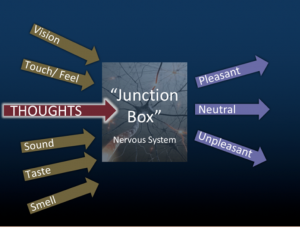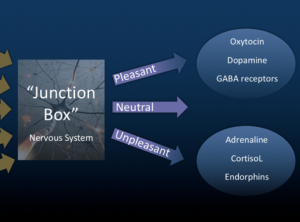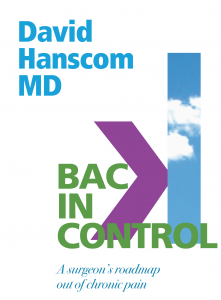To say that the wave of mass shootings over the last few years is disturbing would be grossly understating how most of us feel. One of the most basic of human needs is to feel safe and we largely depend on our society being reasonably civilized. We count on our law enforcement officers to provide that protection regardless of social class, race, religion or sexual preference. When you feel safe, your body chemistry is optimized and much different than when you feel threatened.
Perception versus reality
But our minds are tricky. We are continuously scanning the environment for danger. Your brain is your own personal brain scanner, always looking for danger. Basic issues are oversimplified and threats are magnified. In spite of the mass shootings we actually live in the safest era in history. One of my friends sent me this article pointing out the sharp decline in violent deaths since 1980. Human history is essentially one of violence and power. The vast majority of police officers are remarkable role models and frequently perform acts of heroism. Just walking out the door in a uniform, knowing that he or she could be a sniper target from 200 yards is an act of courage. Massive decline in gun violence
However, the media visually dramatizes stories and focuses on the negative aspects. Every violent act is captured in detail on smart phones. We are helpless to enact common sense social changes due to major political and corporate interests blocking the efforts. This feeds into a collective state of anxiety regardless of how safe we really are and also our tendency to blame others. We have more material possessions and comforts than any society in the history of the world. Shouldn’t that calm us down? What is the problem? Why are we so angry and reactive? The DOC starting point
It’s anxiety. The root cause of our societal angst is relentless anxiety, which is the driver of anger. Unfortunately, the medical profession treats anxiety as a psychological problem when it is really the body’s chemical response to unpleasant sensory input. It is a universal physiological reaction that enables living creatures to survive on this planet. Here is how it goes.
The neurophysiological basis for emotional and physical pain
Your unconscious brain processes 20 million bits of sensory input every second. Each sensation, sound, touch, taste, smell, vision has to be interpreted by your brain as pleasant, neutral or unpleasant. It continuously interprets the sum total of this input and directs your organs to secrete hormones that are relaxing and enjoyable (dopamine, GABA, oxytocin), or signal danger (adrenaline and cortisol). When you feel anxious or afraid you are experiencing the surge of these chemicals in your body.

Any stress, real or perceived, signals danger and your reaction will always be this survival response. The effects of adrenaline and cortisol include sweating, rapid breathing, shortness of breath, hyper-attentiveness, tightness in your stomach, urinary frequency, and a rapid heart rate. Anxiety, anger and adrenaline

The curse of consciousness
The curse of the human experience is that thoughts are also sensory input that cause the same chemical reactions as a physical threat and are competing for sensory attention. The problem with thoughts compared to the other senses is that you cannot escape them. You will consciously or unconsciously act in a manner to avoid unpleasant physical sensory input. Although you can try to suppress or mask disturbing thoughts, they will keep coming at you and will become progressively more intense with repetition. It is also a problem that is made worse by the fact that our lifespans are now about 30 years longer than in the early 1900’s.
Every human faces this problem. If you come from a difficult background or are trying to meet unrealistic expectations, physical symptoms and illness will begin earlier. If you have a great upbringing you may make it through your entire life without too much trouble. I had a rough beginning but thought I had figured it out until I began having panic attacks and extreme anxiety in my mid-30’s. I achieved my “success” through extreme suppression of my thoughts and did not have any sense of anxiety or anger. My body (brain) knew better.
Since you cannot escape your thoughts, you’ll be under a greater or lesser degree of constant chemical assault. Your progressive anxiety may become disruptive. I was in this state for over 15 years, with the last seven of them being intolerable. My battle with NPD Even in the presence of physical pain, most of my patients tell me that they can deal with the physical pain better than the constant worrying and anxiety. Am I operating on your pain or anxiety? What does all of this have to do with the current societal angst and ongoing violence? Anxiety and anger are the same entity.
Anger = anxiety with a chemical kick
Anger occurs when you have lost control. When you do not have the ability to alter an anxiety-producing situation, your body will secrete even more adrenaline in an attempt regain control. Anger is anxiety with a chemical kick. Anger = loss of control
With the correct diagnosis and treatment approach, relentless anxiety is eminently treatable with remarkably simple strategies. It involves:
- Stimulating the formation of new neurological pathways.
- Shifting onto more functional and enjoyable brain circuits.
- Decreasing the adrenaline rush by training yourself to chill out in presence of stress.
Anxiety is a public health issue
These are easily learned skills that should be part of the basic learning curriculum in elementary school. With the added stresses of over-population, etc. it is rapidly becoming a skill that needs to be learned by every one of us quickly and especially by the medical profession, who society has entrusted with its healing. Societal disintegration – untreated anxiety
This conceptual framework is the basis of the second edition of my updated book. We are not going to solve any of this planet’s problems until we address the root problem of sustained anxiety and anger as a major public health issue using the correct therapeutic approach.
Listen to the Back in Control Radio podcast Neurophysiological Basis of Pain

